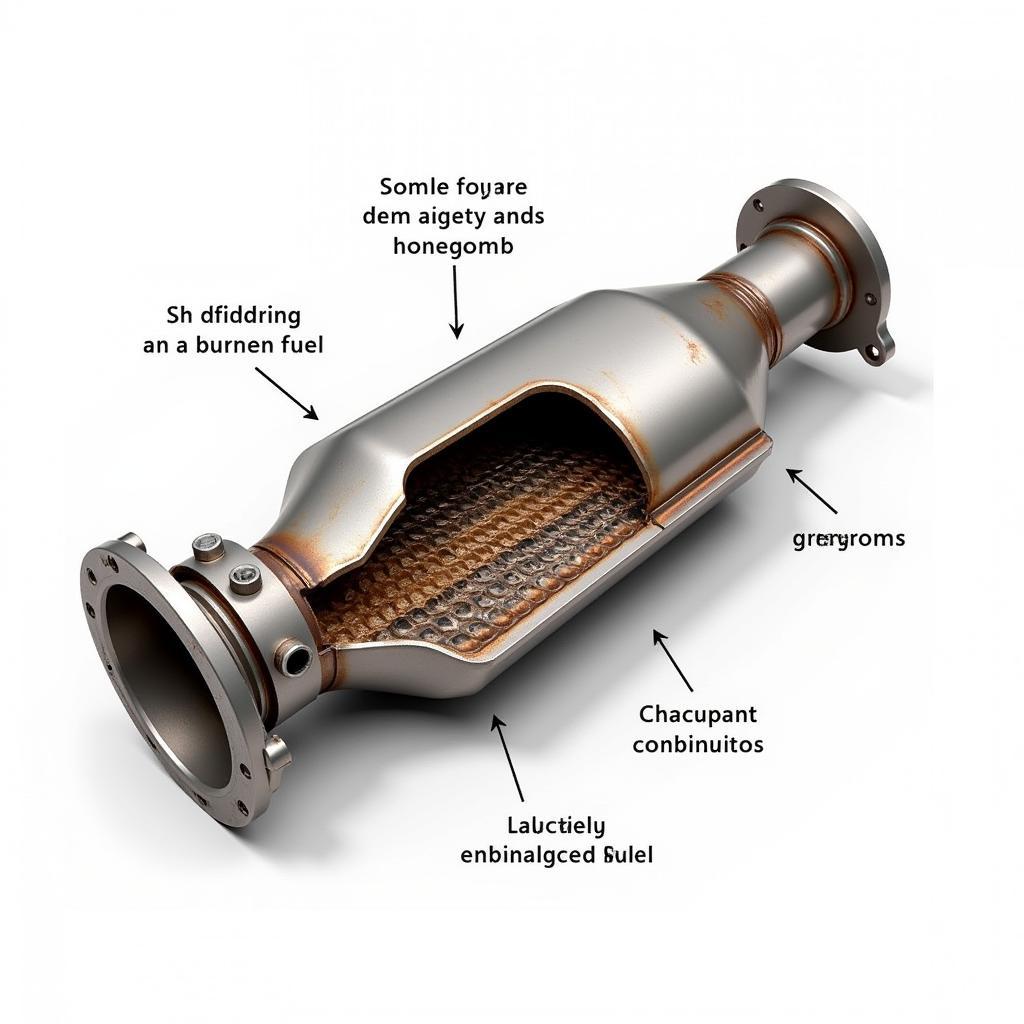Experiencing catalytic converter issues right after a car service? This can be frustrating, especially when you’ve just invested in maintenance. This article will help you understand why this might happen and guide you through troubleshooting and solutions for “Catalytic Converter Problem But Just Got Car Serviced”.
Why a Catalytic Converter Might Fail After Servicing
Several factors can contribute to catalytic converter problems after a recent service. Sometimes, the service itself might unintentionally trigger the issue, while other times, it’s just unfortunate timing. Let’s explore some common causes:
Faulty Oxygen Sensors After Service
Oxygen sensors play a crucial role in monitoring exhaust gases and adjusting the air-fuel mixture. A faulty oxygen sensor, perhaps damaged or incorrectly installed during the service, can send incorrect signals to the engine control unit (ECU). This can lead to a rich fuel mixture, which in turn overloads the catalytic converter, causing it to overheat and potentially fail.
Leaking Coolant or Oil Contamination
If coolant or oil leaks into the combustion chamber during or after servicing, it can contaminate the catalytic converter. These fluids coat the catalyst material, preventing it from effectively converting harmful gases. This contamination can lead to reduced efficiency and eventual failure of the converter.
Incorrectly Installed Spark Plugs or Ignition Components
Incorrectly gapped or improperly installed spark plugs, along with faulty ignition components, can cause misfires. Misfires send unburnt fuel into the exhaust system, where it ignites in the catalytic converter, causing excessive heat and damage. This is especially relevant if these components were replaced or adjusted during the service.
Pre-Existing Issues Masked by Other Problems
Sometimes, a catalytic converter might already be on the verge of failure, but other issues were masking the symptoms. After servicing, these other problems might be resolved, revealing the underlying catalytic converter problem. This can create the impression that the service caused the issue, when in fact, it merely brought it to light.
Troubleshooting Catalytic Converter Problems
If you suspect a catalytic converter issue, here are some steps you can take:
-
Check the Check Engine Light: A lit check engine light is often the first indicator of a catalytic converter problem. Get the diagnostic trouble codes (DTCs) read by a mechanic to pinpoint the specific issue.
-
Inspect for Physical Damage: Visually examine the converter for any signs of physical damage, such as dents, cracks, or rattling sounds.
-
Listen for Unusual Noises: A rattling sound coming from underneath the vehicle, especially when accelerating, can indicate a damaged catalytic converter.
-
Monitor Performance: Decreased fuel efficiency, sluggish acceleration, and a sulfur-like smell from the exhaust are all potential signs of a failing converter.
What to Do if You Suspect a Service-Related Issue
If you believe the catalytic converter problem is directly related to the recent service, contact the service provider immediately. Explain the situation and the symptoms you’re experiencing. A reputable service provider should be willing to investigate the issue and rectify any mistakes made during the service.
“Failing to address a catalytic converter problem promptly can lead to further damage to the exhaust system and reduced vehicle performance,” advises John Miller, ASE Certified Master Technician.
 Damaged Catalytic Converter Internal View
Damaged Catalytic Converter Internal View
Conclusion
Experiencing a “catalytic converter problem but just got car serviced” is a frustrating situation. By understanding the potential causes and troubleshooting steps, you can effectively address the issue and get your car back on the road. Don’t hesitate to contact us at AutoTipPro at +1 (641) 206-8880 or visit our office at 500 N St Mary’s St, San Antonio, TX 78205, United States, for further assistance. We’re here to help!




Leave a Reply